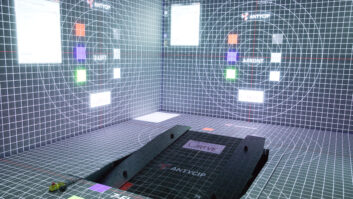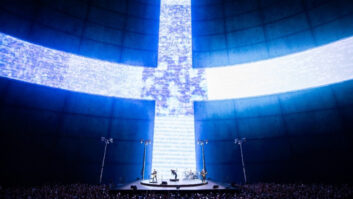
Previously we considered how it is getting increasingly difficult to amaze people at visitor attractions. Here Ian McMurray looks at how to create an immersive environment for guests and the transformation from passive consumption of content to active involvement.
Few disagree that, the higher the resolution of a screen, the more ‘real’ the images it delivers appear. “Our industry’s goal is to transport guests to an immersive alternate reality,” believes Scott Harkless, who is chief innovation officer at Alcorn McBride, a company developing products specifically for the visitor attractions industry. “The more convincing that reality, the more satisfied guests are with their experience. Any technology that aids in the integration of show experience with this alternate themed reality is appealing to attraction designers. One example that comes to mind is the transition to very bright, very fine pitch LED walls as an alternative to projection.”
The key word is ‘immersive’. The challenge, however, is how to create that immersion. The transition from passive consumption of content – the old linear television paradigm – to one that is more actively involved (from choosing from hundreds of viewing options to selecting the angle from which to watch a football match, for example) is accelerating. There is a growing desire to be engaged.
Historically, that may have meant interactive touchscreens, which not only helped engage but also provided at least the perception of a personalised experience.
“We have to be clever and implement experiences that reinforce our themed environments”
Scott Harkless, Alcorn McBride
Not interested
“Today, if we just throw a touchscreen interactive in front of guests, they will not even be interested – let alone immersed,” laughs Harkless. “We have to be clever and implement experiences that reinforce our themed environments. This would involve experiences that accept guest input like gestures, touch, or voice and then react somehow with the themed environment around them – perhaps speaking a secret phrase to bring a seemingly inanimate statue to life, or the wave of a hand causes huge rocks to magically move. Technology is absolutely required to pull things like this off, but the guest should ideally be unaware that it’s there.”
That may seem somewhat futuristic – but at Holovis, it represents the here and now. “Every operator wants to give their guests personalised experiences based on their unique journeys, their level of engagement and the paths they choose to take,” says Peter Cliff, creative director at Holovis. “We’re facilitating this by developing a new product called HoloTrac, a proprietary software suite that leverages advanced computer vision and tracking technologies. This produces powerful data analytic visualisations and insights into park dynamics and operations on the backend, but can be fronted through the provision of guest experiences with personalised content that extends and enhances their journey. The core components of this are attribute, object, gesture and audible recognition, presenting more ways for guests to engage that go well beyond touching a screen.”
Some have suggested VR/AR as key technologies for delivering immersive experiences to the visitor attractions world – but others aren’t so sure. “To view a place from your favourite movie or story on a screen or VR headset is one thing,” believes Harkless, “but to physically walk around it, touch things, interact with the environment, and chat with your favourite characters face-to-face is something else entirely.”
Personal shared experiences
For Harkless, as for many others, one of the key advantages of visitor attractions over home entertainment is that they provide the opportunity for personal shared experiences – if that’s not a contradiction in terms.
“From a design point of view,” says Cliff, “we have learnt to steer away from emerging platforms like VR that lock people away in singular experiences.”
“The holy grail is multi-user interactivity,” believes Matt Barton, CEO of 7thSense Design, “so that all involved can each have their own custom experience – whilst simultaneously enjoying a group experience.”
“This presents its own challenges, though, from both cost and technology limitation perspectives,” he continues. “We’re seeing examples of solutions to this from theme parks that give each user a ‘role’ in the experience. So: instead of everyone having their own, unique take on an experience – they each play a different part in a ‘team story’ instead.”
Panasonic’s European product manager for projectors, Thomas Vertommen too believes that there are alternatives to VR that can deliver greater guest satisfaction. “The brighter, more life-like visuals and sound quality delivered by the latest AV technology can take interactive and immersive experiences to the next level, without the need for complex and cumbersome virtual reality technology,” he says. “It is now possible to make people feel like they are on the stage with their pop idol or at the centre of a scene from history in a museum by manipulating what they see and hear.”
Leander Werbrouck, segment marketing manager, proAV at Barco, believes there is a role for the ubiquitous mobile device – but it has its limitations. “Although BYOD applications can have a strong value-add to an experience, a key element is to allow experiences to be shared,” he says. “Sharing moments and engaging large crowds on the spot is still quite hard to do with only mobile or by simply adding a layer of augmented reality; to create real immersion in the physical life, visualisation technology such as projection or LED displays remains a key go-to means to meet the needs.”
www.7thsensedesign.com
www.alcorn.com
www.barco.com
www.holovis.com
www.panasonic.com







